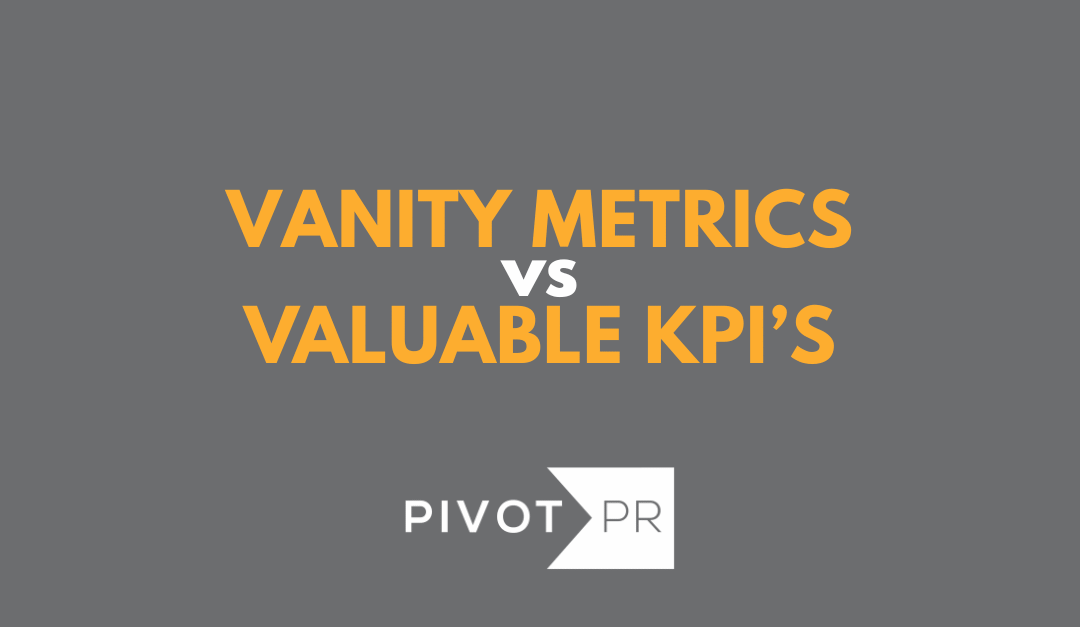
Blog
Vanity Metrics vs. Valuable KPIs: What Really Matters in PR
At PIVOT PR, we love big numbers as much as the next agency. Seeing your campaign rack up thousands of impressions or a spike in social media followers feels good—it’s proof something is happening. But when it comes to evaluating the true impact of a public relations strategy, we’re not here to simply look good on paper. We’re here to move the needle. And that means going beyond vanity metrics.
What Are Vanity Metrics?
Vanity metrics are surface-level stats that look impressive but don’t necessarily reflect meaningful business outcomes. Think:
These metrics can be useful directional signals, but they’re often inflated, lack context, and rarely tie directly to strategic goals. In short: they’re good for ego, but not for strategy.
The KPI Shift: From Exposure to Impact
In contrast, key performance indicators (KPIs) help us measure how PR drives real business results. At PIVOT PR, we work with clients to define KPIs that align with their goals—whether it’s raising awareness, driving conversions, changing perception, or deepening relationships with key audiences.
Here are the PR KPIs that really matter:
1. Message Pull-Through
Are your core brand messages showing up consistently in earned media? We analyze not just the presence of media coverage, but whether it says what you need it to say.
2. Media Quality Over Quantity
Instead of counting clips, we assess the quality of each placement:
-
Was it in a top-tier or niche-relevant outlet?
-
Was your spokesperson quoted?
-
Did it include backlinks to your site?
-
Was there syndication value?
3. Share of Voice (SOV)
How often is your brand being talked about compared to competitors? A rising share of voice indicates growing authority and visibility within your industry.
4. Engagement with the Right Audiences
Rather than just total likes or comments, we care about who is engaging. Are your customers, industry leaders, or investors responding? That’s the audience that moves your brand forward.
5. Website Conversions
Traffic is one thing, but what are people doing once they arrive? KPIs like time on page, bounce rate, or form fills help connect PR efforts to lead generation and customer behavior.
6. Sentiment and Reputation Tracking
Not all press is good press. We monitor how your brand is being talked about and whether that perception aligns with your desired reputation.
7. Strategic Relationships Built
For community relations and media outreach, we look at KPIs like new partnerships formed, inbound interest from reporters, and speaking opportunities landed.
Bottom Line: PR Should Drive Purpose
At PIVOT PR, we believe successful public relations isn’t just about being seen—it’s about being understood, trusted, and chosen. By focusing on the KPIs that actually reflect progress toward your business objectives, we help our clients turn visibility into value.
Ready to stop chasing likes and start building impact? Let’s talk KPIs that matter.
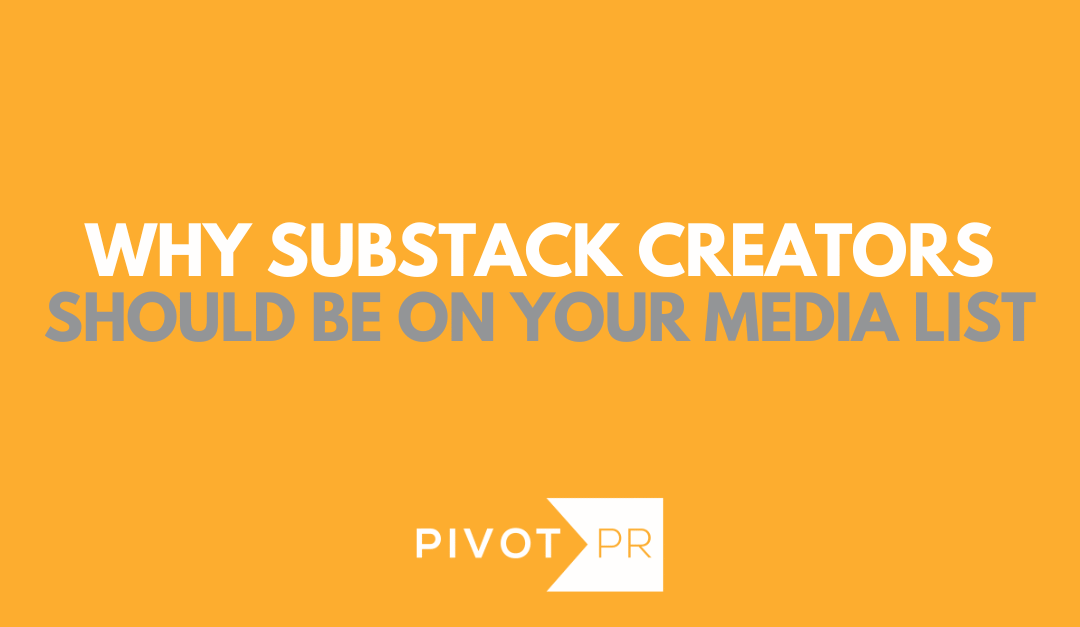
Blog
At the core of every effective media relations strategy is a well-researched, targeted media list. Traditionally, this list focused on broadcast and print outlets. With the rise of digital media, it expanded to include online publications and influential blogs. Podcasts then introduced a powerful new channel for reaching loyal audiences. Now, a new platform is capturing our attention: Substack. With its rapid growth and increasing influence, Substack is quickly becoming a powerful player in the modern media landscape and a valuable opportunity for public relations.
Substack’s growth speaks volumes. The Wall Street Journal reported that the platform reached five million paid subscribers in March, which is up more than one million since November. On its own website, Substack notes that it has more than 50 million active subscriptions including a mix of paid and free content.
What is Substack? It is a platform that helps writers and creators build paid publications and grow direct relationships with their audience. Substack mixes the features of a blog, e-newsletter and app. Readers can choose which format to view. The platform is mostly written content, but it can also include photos, videos and audio.
Who are the Creators? The platform’s appeal is in its simplicity and creator control. Individuals can own their audience data (email subscriptions), monetize content and build personal media brands. Many journalists are making the leap from traditional outlets to independence with Substack. In a recent PR Daily article Alexis Benveniste was highlighted as part of a “new wave of seasoned journalists who are becoming entrepreneurial.” Newsweek also explored the trend in its article “Why Is Everyone Suddenly on Substack?” mentioning several reporters who decided to pursue an independent role rather than seeking a traditional media position.
Who are the Subscribers? While traditional media paywalls face pushback, Substack continues to draw in a loyal paying audience. These readers are different. They are investing in the individual voices that they trust rather than access to general content. The New York Times’ spoke with several readers, many stating that they are willingly paying for multiple subscriptions. They have a vested interest in supporting a particular person’s work.
How to Pitch Substack Creators? Don’t overlook the PR opportunities on Substack. Writers may not be listed in media databases or work for a top-tier outlet, but they have an incredibly engaged and loyal audience. The relationships with Substack creators may also look different. It can be a blend of a traditional journalist and social media influencer. Pitching success will still rely on knowing what content resonates with their audience. But there can also be opportunities to be more creative or coordinate a strategic paid partnership with a Substack creator.
With thousands of newsletters and various levels of access to paid content, navigating Substack can be overwhelming. But the platform’s growth signals that now is the time to explore its potential as part of your media relations strategy.
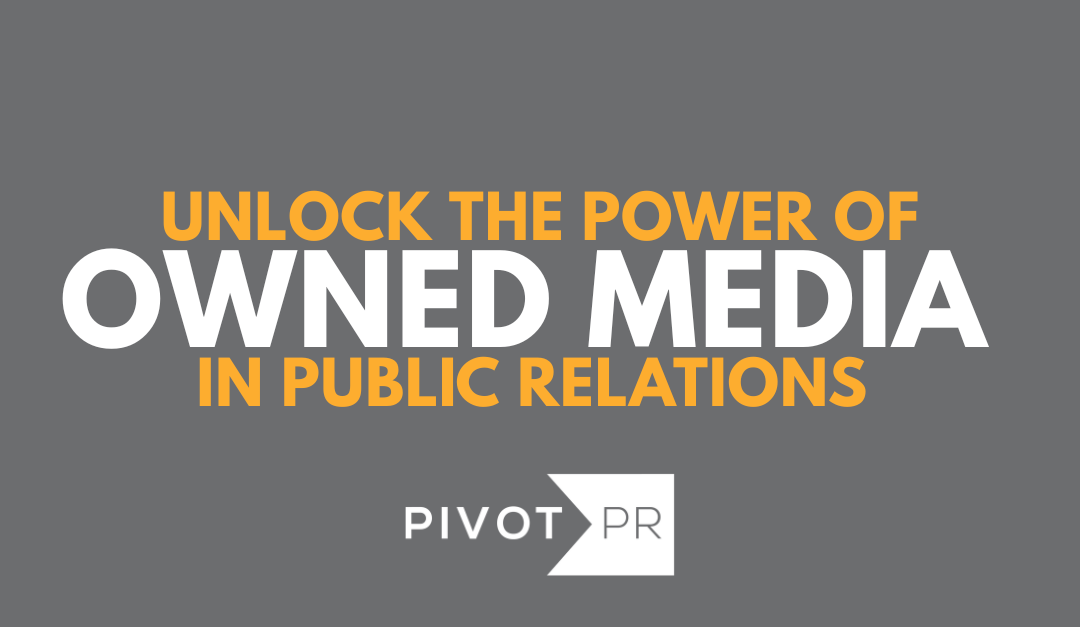
Blog
Today’s media landscape requires adaptability and agility. How we consume news has changed. Print publications are shifting to digital platforms. Traditional newsrooms are shrinking as the number of content creators and influencers increases. Social media is now a go-to source for gathering information, but it is also marked by constant change. We’re currently watching this with TikTok’s ongoing efforts to avoid a ban. As the media landscape evolves, it creates the opportunity for brands to think creatively about owned media channels and leverage them as part of a public relations plan.
Owned Media
Owned media refers to the content that your brand owns and controls. You have the ability to shape the messaging and distribution. It is different than earned media as it doesn’t rely on a journalist or news outlet. This offers more opportunities to share your brand story but can be a challenge if it is too promotional. Developing high-quality content that provides value for your target audience is essential to an owned media strategy. It’s also important to identify the right platforms for distributing your content to ensure it reaches your target audience effectively.
Examples of Owned Media Channels
- Website: A website allows you to control the messaging and quickly update the content as you monitor interactions. Keep visitors exploring your information for longer with engaging design and easy-to-navigate webpages. Measurement and analytics are at your fingertips with the ability to track traffic, conversion, and engagement.
- Online Newsroom: Adding an online newsroom to your website is a great way to centralize press materials that are most relevant to journalists. This is especially important now while most journalists are asked to do more with fewer resources. Be sure to include company announcements, press releases, fact sheets, videos, and photos. Executive thought-leadership articles and insightful blog posts can also go in the newsroom. Our client Jackrabbit Technologies’ offers an engaging Newsroom that shares workplace culture, company growth, tech awards and software upgrades.
- Podcast: Podcasts allow your brand to share thought-leadership through audio. Listeners often feel more connected to the hosts. A consistent schedule with engaging information can foster brand loyalty. Episodes are also a great tool to demonstrate a hosts’ ability to credibly speak on a topic and integrate as part of media outreach.
- Email Newsletter: Email newsletters provide direct communication to a dedicated audience. Building an email database is key. It creates an opportunity where you are less reliant on social media algorithms. Newsletters are also an excellent platform for amplifying earned media and sharing curated news and updates.
Add Owned Media to a PR Strategy
When planning a public relations strategy, owned media should be at the core. It builds credibility and positions your brand and leadership team as a trusted source. Done right, it encourages your audience to share your content organically. The main thing is to create value that resonates with your audience. It’s quality over quantity. By consistently tracking how your audience spends time with your content, you can adapt and stand out in today’s media landscape.
Ready to Elevate Your PR Strategy with Owned Media
At PIVOT PR, we create owned media content that enhances your public relations efforts and builds meaningful connections with your audience. To learn more about how we can support your PR goals, email us at info@pivot-pr.com.
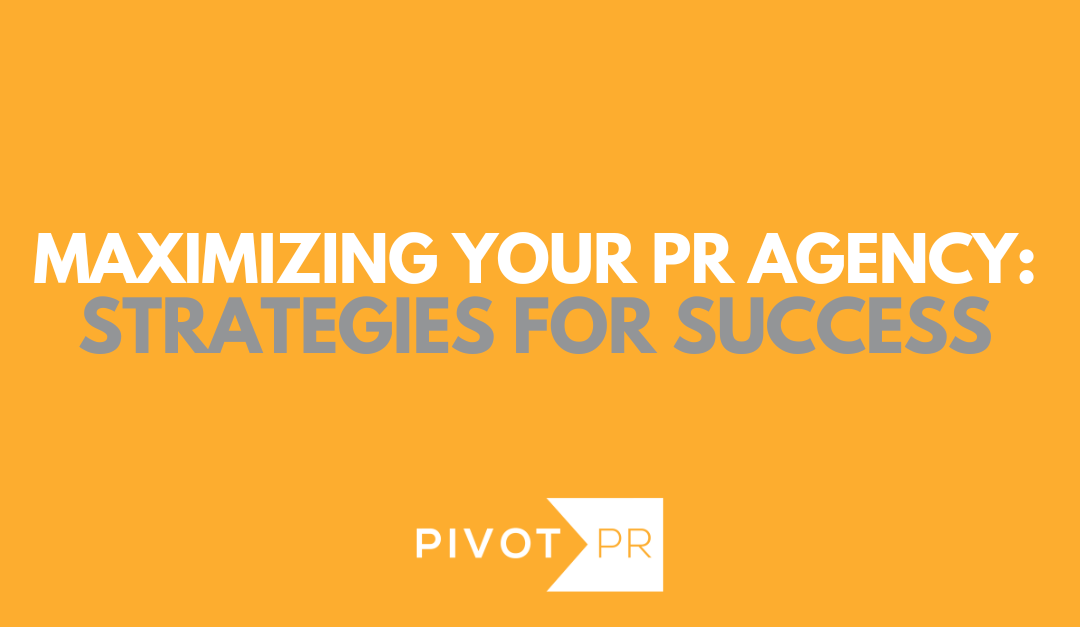
Blog
In today’s competitive landscape, a strong public relations (PR) strategy is crucial for any business aiming to build and maintain a positive reputation. Partnering with a PR agency can be a game-changer, but to truly harness its potential, companies must adopt a collaborative approach. Here are some key strategies to maximize the value of your PR agency partnership.
Define Clear Goals
Before engaging with a PR agency, it’s essential to define what you want to achieve. Whether it’s increasing brand awareness, managing a crisis, or launching a new product, clear objectives provide direction for your agency. Establish measurable goals and ensure that both your team and the agency are aligned on these targets.
Foster Open Communication
A successful partnership is built on trust and transparency. Regular communication helps ensure that both parties are on the same page. Schedule consistent check-ins to discuss progress, challenges, and any necessary adjustments to the strategy. This collaborative approach enables the agency to adapt and respond to your needs effectively.
Leverage Their Expertise
PR agencies are equipped with industry insights, media contacts, and strategic thinking that can elevate your brand’s presence. Tap into their expertise by involving them in brainstorming sessions or seeking their advice on market trends. This collaborative exchange not only enriches your campaigns but also strengthens your relationship with the agency.
Provide Comprehensive Background
To craft effective narratives, PR professionals need a deep understanding of your brand, values, and target audience. Share comprehensive background information, including past PR efforts, customer personas, and competitive analysis. The more context you provide, the better equipped they will be to create tailored strategies that resonate with your audience.
Embrace Flexibility
The PR landscape can change rapidly due to social media trends, current events, or shifts in public sentiment. Stay flexible and be willing to adjust your strategies based on real-time feedback and emerging opportunities. Encourage your agency to pivot as necessary, allowing them to capitalize on trends that align with your brand.
Measure Success
Establish key performance indicators (KPIs) to track the effectiveness of your PR efforts. Regularly assess the impact of campaigns through metrics like media coverage, audience engagement, and sentiment analysis. Sharing these insights with your agency not only provides valuable feedback but also helps refine future strategies.
By setting clear goals, fostering communication, leveraging expertise, providing comprehensive information, embracing flexibility, and measuring success, companies can optimize their partnership with PR agencies. With the right approach, your PR agency can become an invaluable ally in building and sustaining a positive brand image.
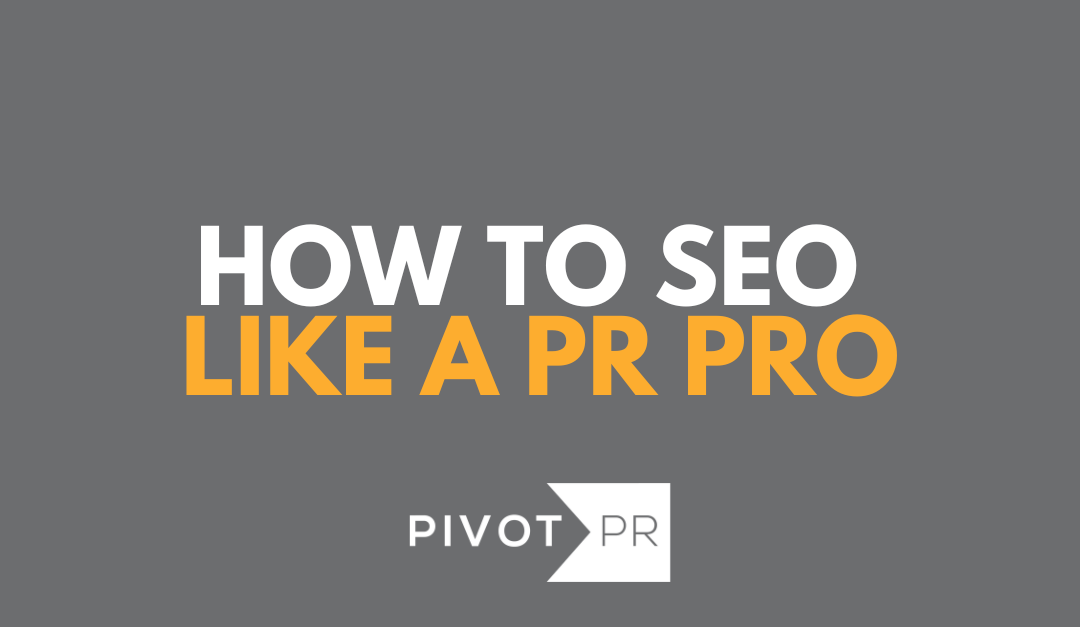
Blog
We all know public relations includes fundamental tactics such as messaging, content creation, awards, rankings, reviews, and of course, media relations. In a world where search engine optimization (SEO) is imperative to a potential customer’s research online, these PR tools can be leveraged to enhance your organization’s visibility, ranking higher and more frequently in search results. Nearly all industries can benefit, so if you want to SEO like a pro, while practicing PR, here are five search engine optimization vernaculars you can’t go without.
- Keyword Research is the process of identifying specific words and phrases your target audience is using to search for information or products online. Locating and using the right keywords in your content significantly increases the chances of your website ranking higher in search engine results. This helps attract more relevant traffic, making it easier for people to find and engage with your content. Google Trends can be a powerful tool to identify keywords.
- Backlinks are links from other websites pointing to your content and are a crucial piece of the SEO puzzle. Simply put, the more high-quality backlinks your site earns, the more authoritative it appears to search engines. This leads to higher search rankings, which means more people will find your business when searching for related topics. This is where SEO can cohesively work with your PR plan, including media relations and content creation. Providing calls to action and incorporating website links in media coverage will boost credibility.
- External Linking is the process of creating hyperlinks on your website to direct users to other sites. This powerful method can increase the credibility of your page in the eyes of search engines like Google. When incorporating links, it’s important to use natural and relevant anchor text, which are terms that naturally flow in the context of your website.
- No-Follow Links are a specific type of backlink that tells search engines not to pass “SEO value” from the linking site to the linked site. These links don’t help improve your search rankings, but they still drive traffic to your website.
- Domain/Page Authority is a score from 1 to 100 that predicts how well a specific page on your website, or the website as a whole will rank in search engine results. The higher the score, the better that page is likely to rank.
Now that SEO is top of mind, you’ll need a tool to analyze your efforts. Moz Link Explorer measures everything we’ve covered for free- domain authority, keyword ranks, backlinks, and spam scores, and it also lists your top search competitors and includes their visibility score.
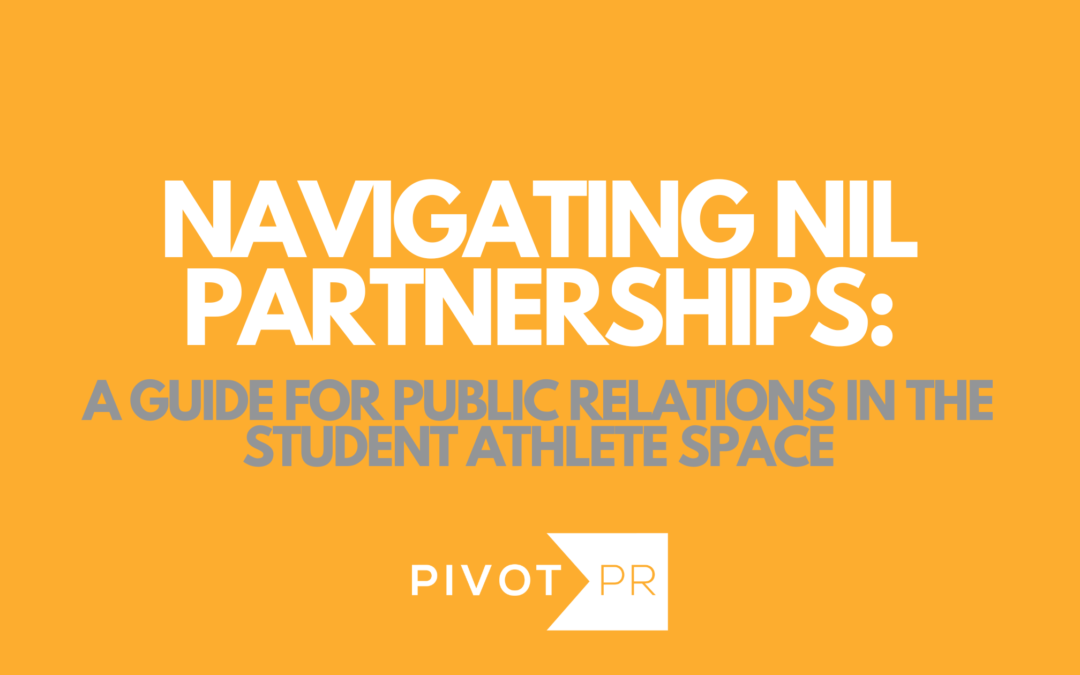
Blog
The landscape of college athletics has transformed dramatically with the emergence of Name, Image, and Likeness (NIL) rights. For public relations professionals, this shift presents both a unique challenge and an exciting opportunity. As college athletes now have the chance to monetize their personal brand, PR strategies must evolve to support these young athletes effectively.
Here’s how PR professionals can navigate the dynamic world of NIL partnerships and leverage these opportunities to foster success.
Understanding the NIL Landscape
NIL rights allow college athletes to receive compensation for their personal brand, including endorsements, sponsorships, and other revenue-generating activities. This paradigm shift, which began in July 2021, has opened new avenues for athletes to build their personal brands while still competing in college sports. For PR professionals, understanding this new legal and commercial framework is crucial for developing effective strategies.
Building a Brand from the Ground Up
One of the primary responsibilities of PR professionals working with college athletes is brand development. Athletes are not just players; they are emerging brands with unique stories and personalities. The role of PR is to identify and amplify these attributes, creating a compelling narrative that resonates with both fans and potential sponsors. This involves crafting personalized press kits, managing social media presence, and securing media coverage that highlights the athlete’s achievements and character.
Creating Authentic Partnerships
Authenticity is key in NIL partnerships. College athletes are often new to the world of endorsements and sponsorships, and PR professionals must guide them in choosing partnerships that align with their personal values and interests. The right partnership should feel genuine to the athlete’s brand and resonate with their audience. PR professionals should facilitate conversations between athletes and potential sponsors to ensure mutual goals and values are aligned, resulting in authentic and impactful collaborations.
One of our clients, Piada Italian Street Food, recently embraced the power of partnering with college athletes for National Piada Gives Day. By carefully selecting athletes who naturally align with its mission, this initiative not only enhanced the brand’s credibility but also fostered a meaningful connection with the community, showcasing that true success in these sponsorships come from shared values.
Navigating Compliance and Regulations
The NIL landscape is still evolving, and regulations vary by state and institution. PR professionals must stay informed about these regulations to ensure that all endorsements and sponsorships comply with legal requirements. This includes understanding the rules set by the NCAA, state laws, and university policies, such as requirements for disclosing deals or limits on certain types of promotions. Keeping abreast of these regulations will help avoid potential pitfalls and ensure that all partnerships are legally sound.
Leveraging Digital Platforms
In today’s digital age, social media and online platforms are crucial for building and promoting an athlete’s brand. PR professionals should work with athletes to develop a robust online presence, utilizing platforms like Instagram, X, and TikTok to engage with fans and attract sponsors. This involves creating a content calendar, choosing NIL-friendly photos and videos, managing posts, and analyzing engagement metrics to refine strategies. Additionally, leveraging digital platforms for collaborations with influencers or brands can amplify the athlete’s reach and impact.
Fostering Long-Term Success
Effective PR strategies for NIL partnerships go beyond immediate gains. It’s about building a sustainable and positive brand presence for the athlete. PR professionals should focus on long-term goals, such as cultivating lasting relationships with sponsors, maintaining a positive public image, and helping athletes successfully transition into their post-college careers.
Working with college athletes in the NIL space requires a nuanced understanding of brand management, compliance, and digital engagement. By focusing on authenticity, strategic partnerships, and long-term success, PR professionals can help athletes navigate this exciting new era and achieve their personal and professional goals. The evolving world of NIL presents a dynamic opportunity for PR professionals to make a significant impact on the careers of emerging sports stars.
To discover how PIVOT PR can enhance your NIL strategy and elevate athlete visibility, email us at info@pivot-pr.com.





